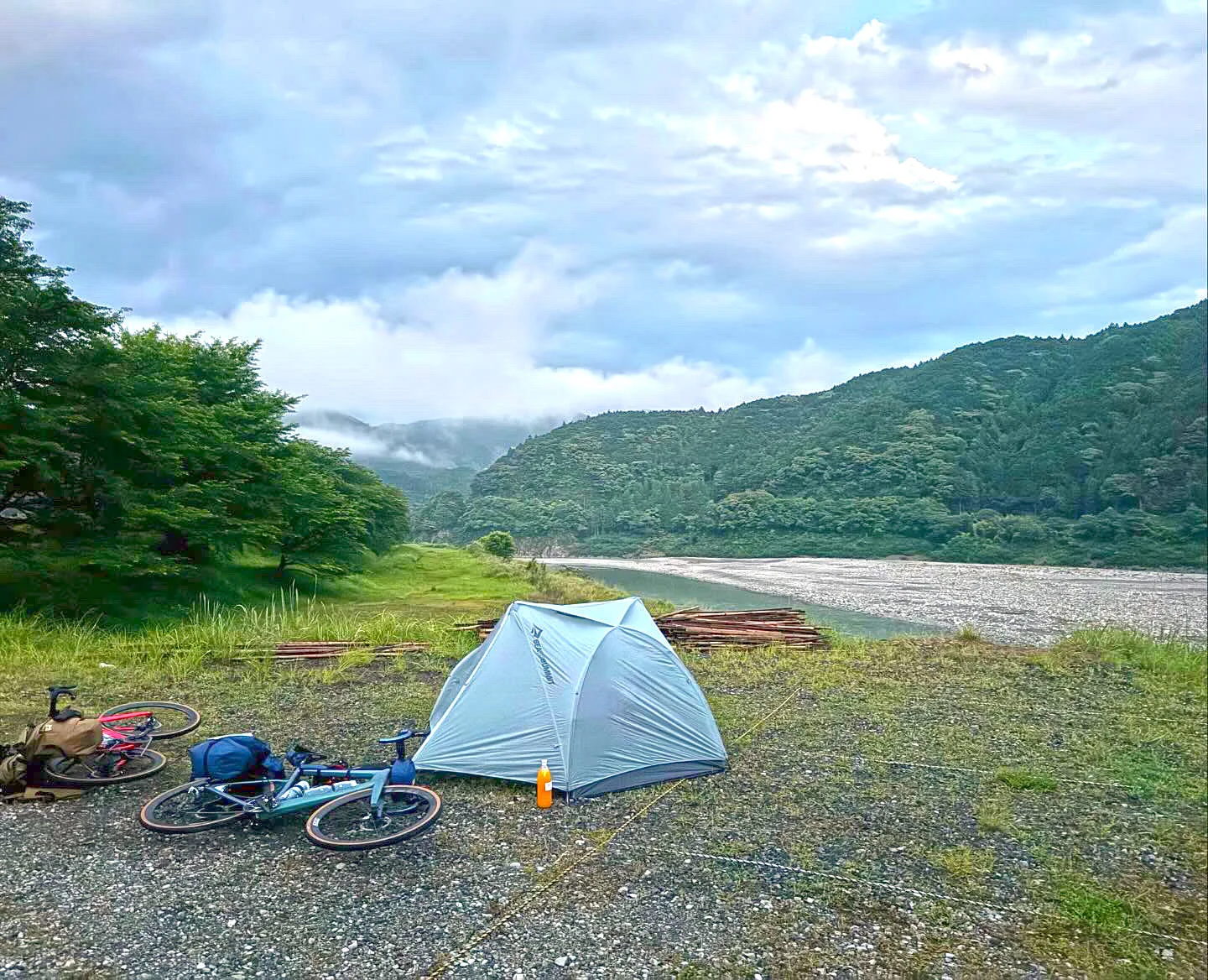For my father-son bikepacking trip through the Kii Peninsula, Japan, I needed sleeping arrangements that were as light as possible, but also comfortable. And, as much as possible, a roomy tent.
Sea to Summit is one of the few brands that offers everything needed to set up camp, and they do it with bikepackers in mind thanks to the unique, splittable Telos Bikepacking TR2 tent. We used that plus an assortment of their sleeping pads, liners, and pillow to tackle a week of remote bicycle touring, here’s the details…
Sea to Summit Telos Bikepacking TR2 tent
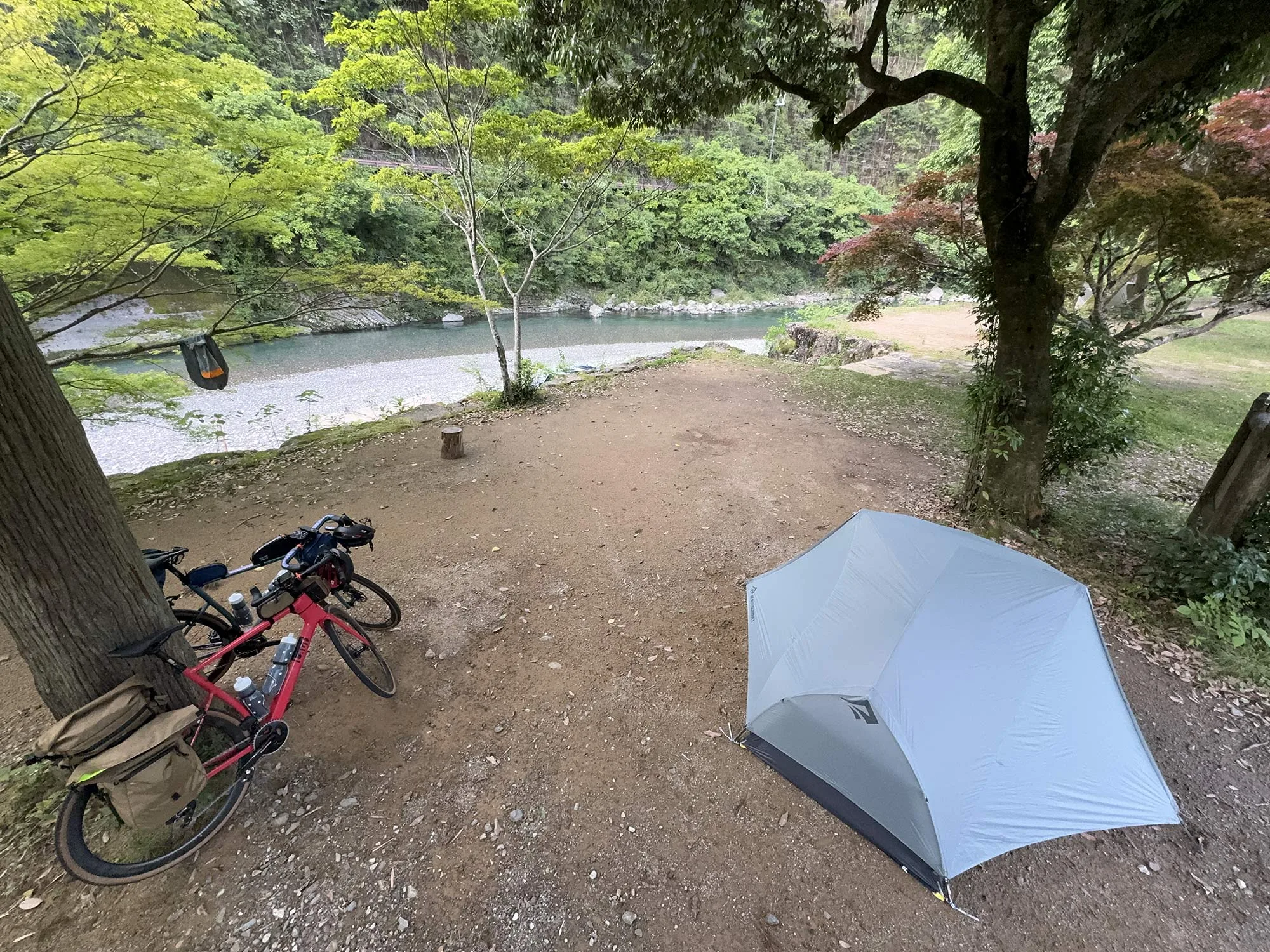
Sea to Summit’s Telos tents are their lightweight, backpackable tents, available in 1- and 2-person sizes. The Telos Bikepacking TR2 is a cycling-specific version that packs into two separate, waterproof roll-top bags. It includes straps to mount them to your fork, which is best done over a three-bolt cage like the King Cage Manything Cage or Wolf Tooth’s Morse Cargo Cage:
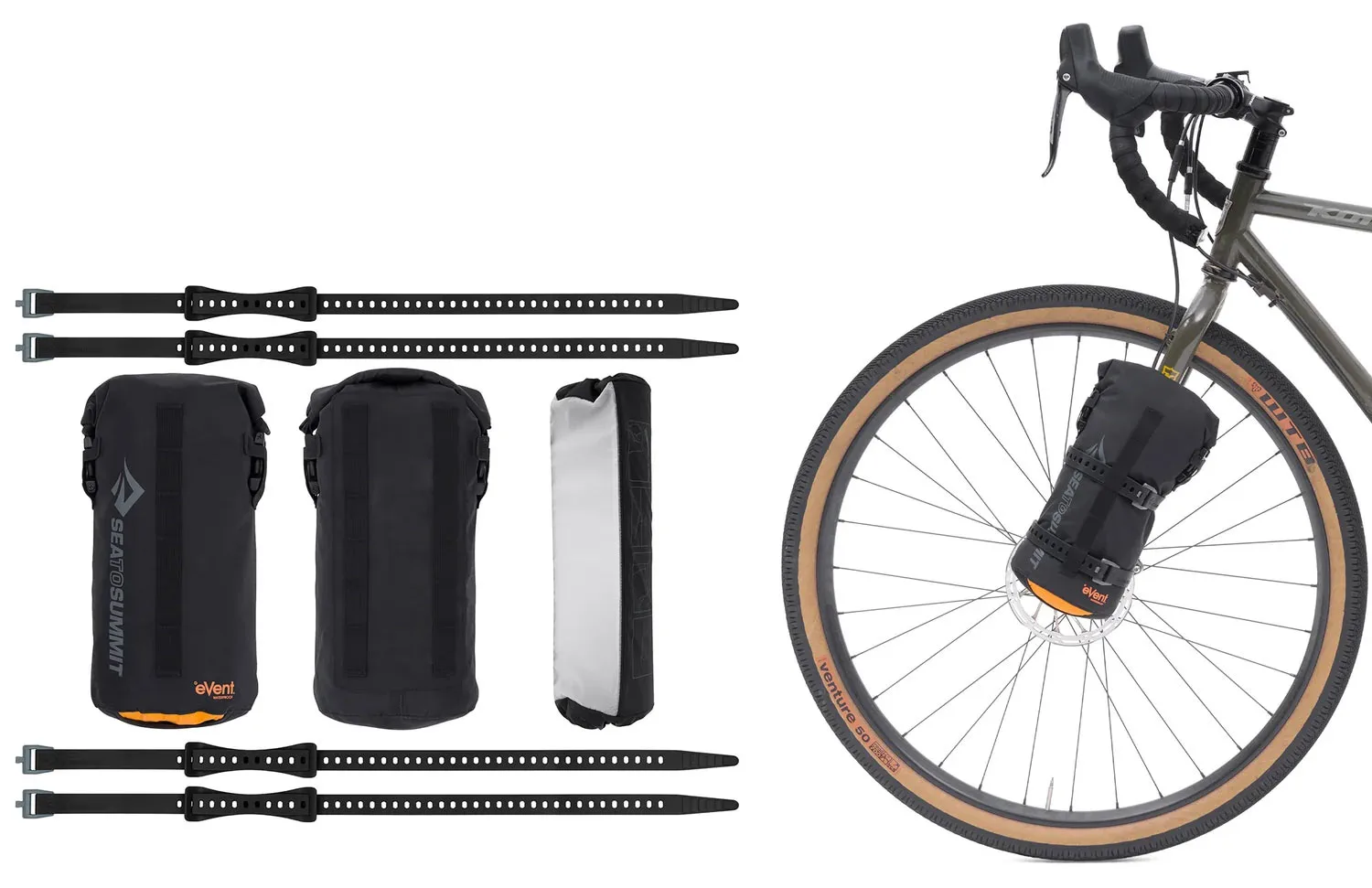
This design has three benefits. First, it makes it really easy to pack the tent and balance the weight on your bike, just put one bag on each fork leg. Second, it keeps it dry and compact.
But that’s not how we used it…we each had a full set of bikepacking bags from North St., which brings me to the third benefit: You can split the weight between riders. And, if you’re packing the tent that way, you don’t need to use the waterproof roll-top bags and straps, saving you 14.3oz (405g). We did keep them in their roll bags to weatherproof them and keep things organized & protected, but you could just stuff everything into your pannier bag.
Cleverly, the pole sleeve has a translucent white panel that clips to the ceiling…put your bike light or phone in there and it creates a lamp for smooth, even illumination at night.
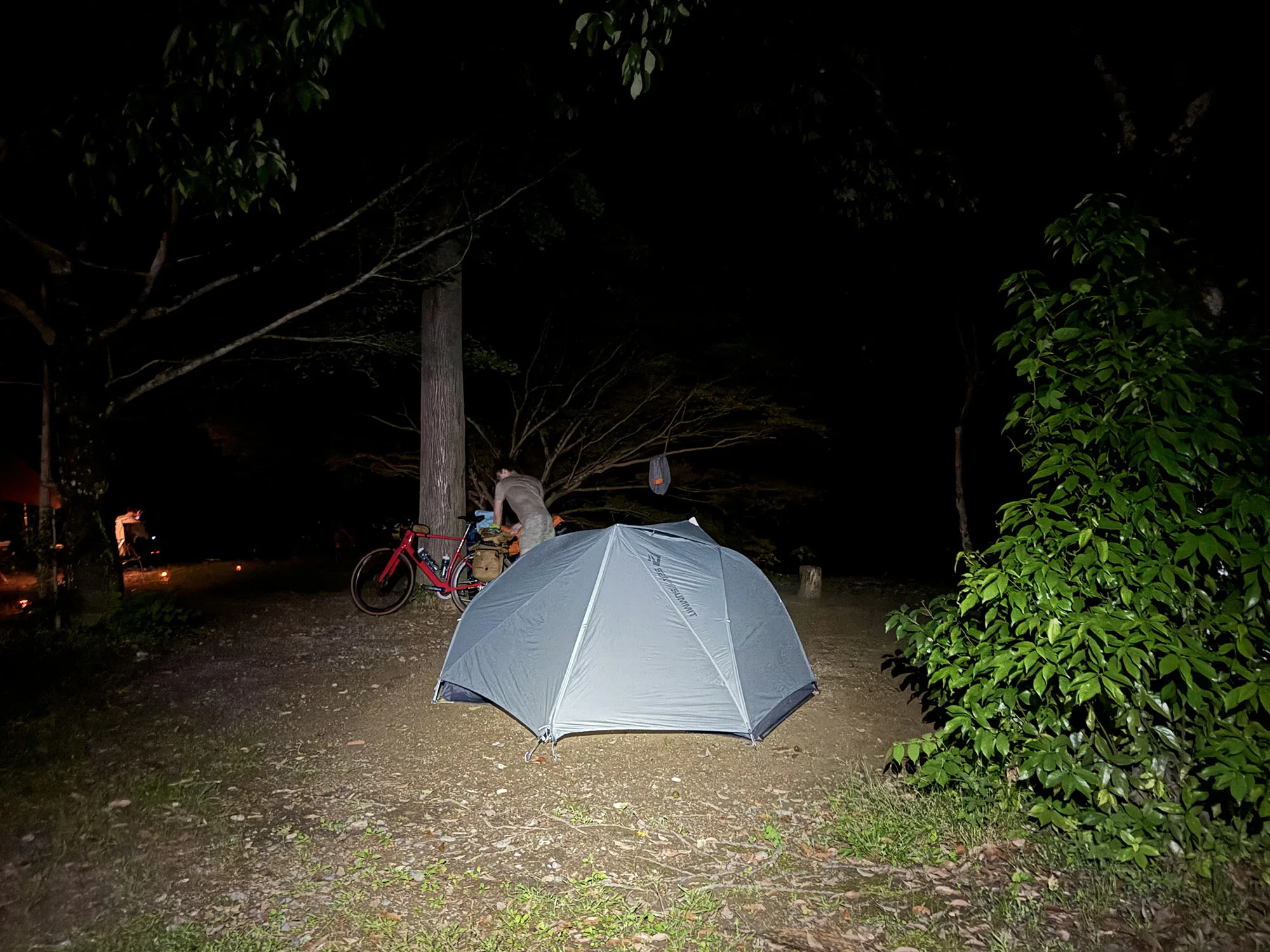
The ripstop nylon rainfly is waterproof, seam-sealed, and has lightly reflective bits in it (that didn’t show up very well in my photo). It’s the only thing that requires stakes in the ground, and that’s mainly to pull the sides out to create a sizeable vestible on both sides. It’s more than enough space to keep helmet, shoes, etc., outside of the tent.
It also has doors on both sides, allowing either person to easily enter/exit without disturbing the other.
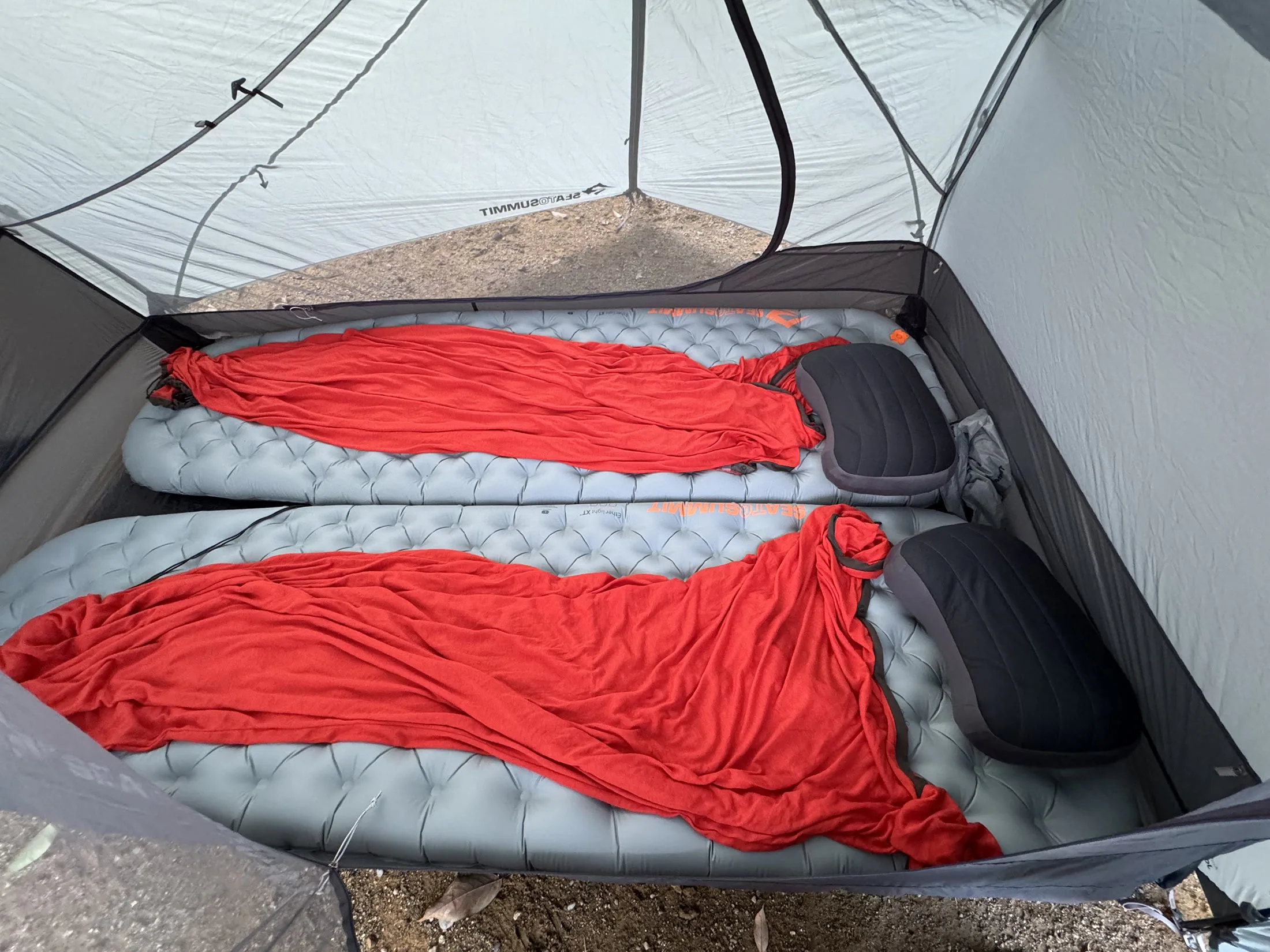
Inside, it feels roomier than it is thanks to a tall, boxy shape created by a cross-pole that spreads the roof out to the sides. The footprint holds two of their inflatable sleeping pads, and that’s about it. Small mesh pockets on either side are good for a phone, headlamp, and a couple other small things.
Key specs:
- Packed weight with everything – 4lbs 3.5oz (1.91kg)
- Minimum trail weight – 3lbs 5.2oz (1.51kg)
- Floor dimensions – 84.5″ x 53″ x 43″ (28 sq. ft.)
- Vestible area – 19.5 sq. ft.
- Peak height – 43.5″
- MSRP – Originally $699, currently $524

The Telos TR2 isn’t the absolute lightest bikepacking tent available, but it’s competitive, and it’s boxy interior and versatile split-packing design make it a great option for two-person camping. It’s also really easy to setup, break down, and pack. Huge mesh doors and ample roof vents prevented it from getting steamy inside, even on rainy nights, which was extremely helpful since we rarely had time to let it sit in the sun and dry before needing to pack up in the mornings.
The quality of materials and durability are excellent. And while the floor “tub” is fairly waterproof, I always recommend bringing the footprint (~$55) to protect the bottom from rocks and excessive moisture.
Sea to Summit Sleeping Pads, Liners & Pillow
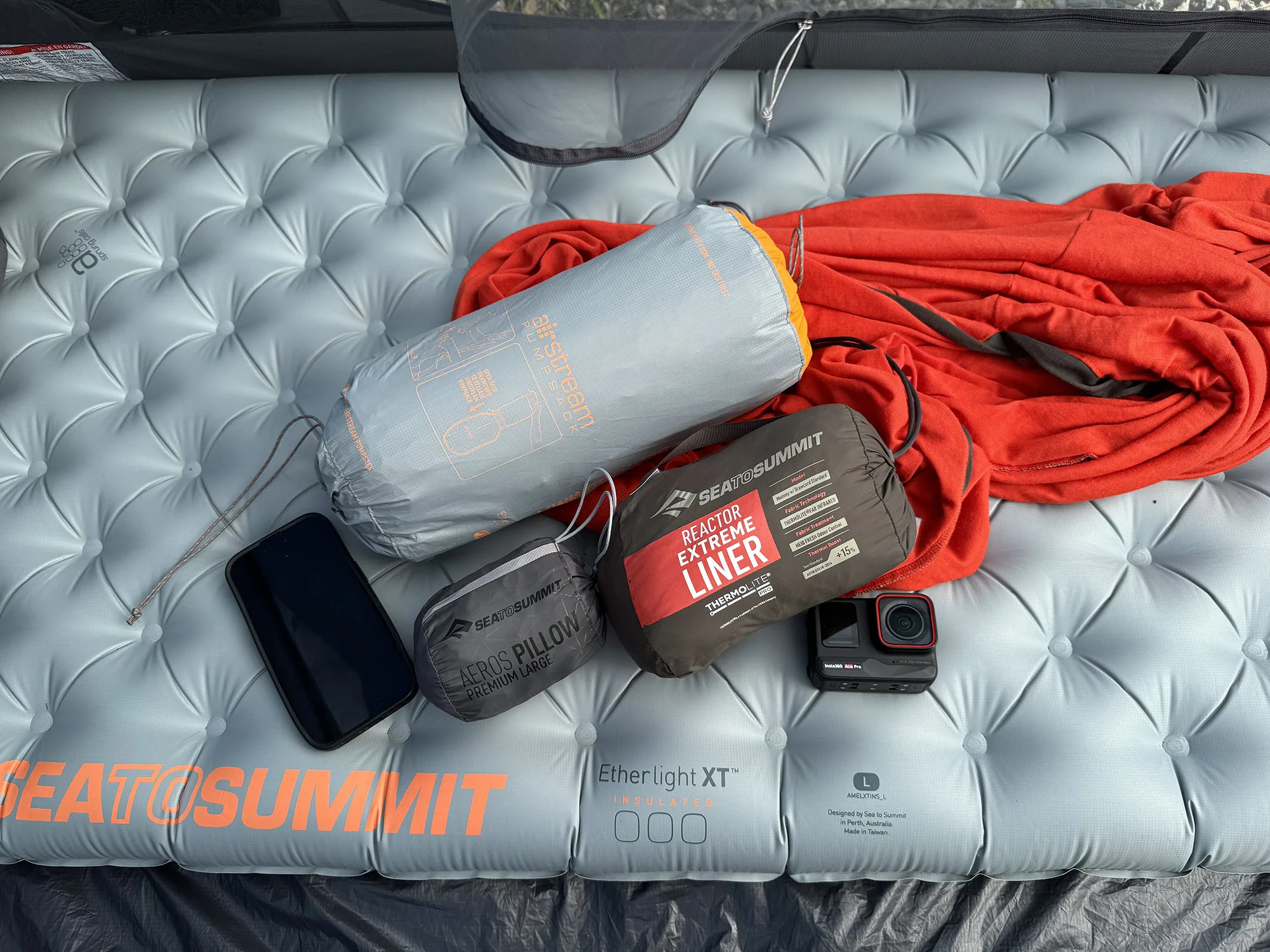
For sleeping, we brought along the following:
- Ether Light XT insulated sleeping pad (470g)
- Reactor Extreme Liner (342g)
- Aeros Premium Pillow (79g)
The Etherlight XT sleeping pad is, hands down, the best I’ve ever used. It’s thick (4 inches!), didn’t feel cold, and surprisingly quiet for an air mattress.
It’s also incredibly quick and easy to inflate and deflate thanks to separate valves with a one-way inflation port. The stuff sack doubles as a bellows, just blow gently into it to create a giant balloon of air, then squeeze that into the pad. This not only works much quicker than blowing directly into the pad itself, it also great reduces the amount of moisture from your breath that enters the pad, which can cause gross things to happen over time.
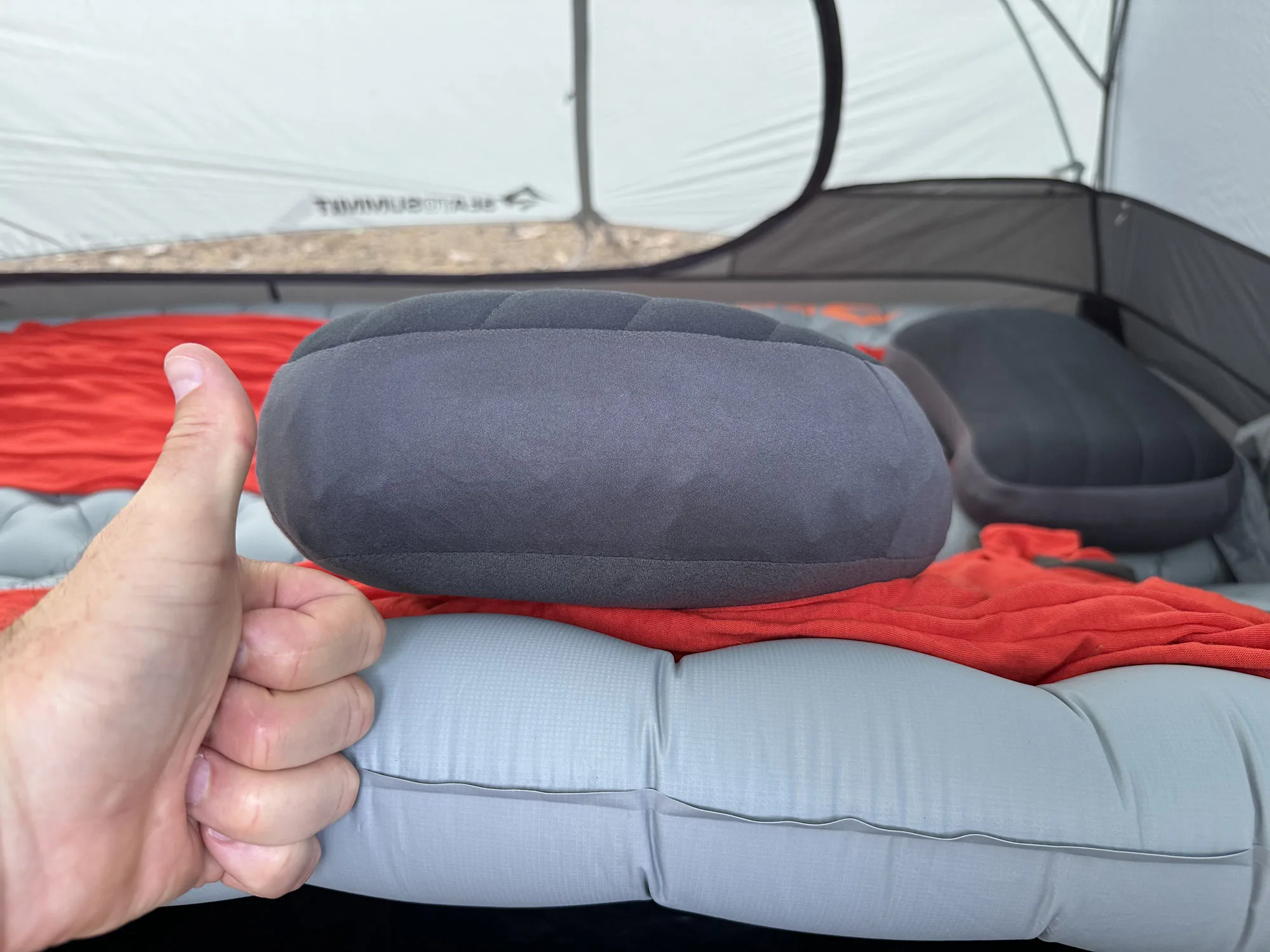
The mattress uses radiant insulation to reflect body heat back to you, and it seemed to work well. Nights were chillier than anticipated, so that helped since we optimistically brought only liners rather than sleeping bags to save space. Not gonna lie, we were cold most nights and ended up sleeping in whatever clothes we brought, including the Gore rain jackets some nights.
Sea to Summit’s Reactor liner series has a lot of options, and the Extreme is very comfortable. It’s made with Thermolite Pro fleece with an infrared-absorbing ceramic pigment, which I’d hoped would be just enough warmth but also not be too hot. I think it would be perfect for temps in the 60’s and 70’s (Fº), but most of our nights dipped into the 50s. That said, I think it’d also be great as a warmth booster inside a proper sleeping bag on much colder nights, too. Bottom line, it’s probably best to pack a little extra warmth and slide out of it than be cold and wish for more layers.
The Aeros Premium Pillow was an absolute standout. It’s supremely comfortable, completely quiet, and packs down very small. It’s only 19g heavier than their Ultralight version, and it’s softer. It uses the same dual valve to inflate, making it quick and easy to use. Highly recommend this for any type of camping.
If you’re looking for lightweight bikepacking or camping gear that doesn’t skimp on comfort, definitely check out Sea to Summit’s vast collection.
